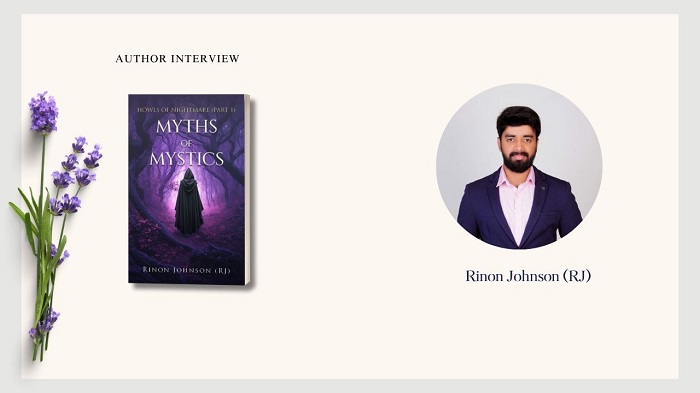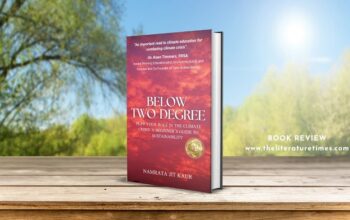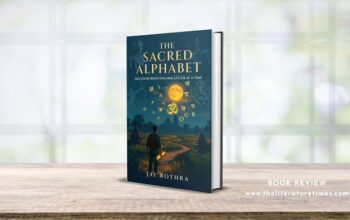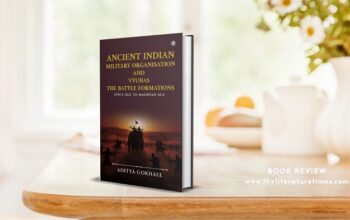The Literature Times: Congratulations on the release of Myths of Mystics: Howls of Nightmare (Part 1). Can you share how the initial idea for this story came to you?
Rinon Johnson (RJ): The spark for “Myths of Mystics: Howls of Nightmare” came to me on a stormy night, surrounded by dusty tomes and flickering candles. I was delving into the rich world of mythology, exploring the darker corners of folklore and legend. The idea began to take shape as I stumbled upon ancient tales of shape-shifters, mystical creatures, and the blurred lines between reality and the supernatural.
The Literature Times: This is the first installment of a planned seven-book series. How did you plan the overall arc of such a vast story?
Rinon Johnson (RJ): Planning a seven-book series is a daunting task! To create a cohesive narrative arc, I started by developing a broad outline, focusing on key plot points, character arcs, and thematic resonance. I began with the end in mind, envisioning the ultimate conclusion and working backward to craft a narrative that would unfold organically. I created character profiles, world-building notes, and a rough timeline to guide me. Throughout the process, I’ve allowed for flexibility, letting the story evolve and characters grow. Each installment is designed to stand alone while contributing to the larger narrative, building tension and suspense that propels readers toward the series’ climax. The seven-book structure allows me to explore different themes, plot threads, and character dynamics, creating a rich, immersive experience. I’m excited to share this epic journey with readers, and I’m confident that the story will unfold in unexpected yet satisfying ways.
The Literature Times: The book explores themes like politics, betrayal, and revenge through a fantasy lens. What inspired you to weave real-world issues into a fictional tale?
Rinon Johnson (RJ): Fantasy allows us to explore complex issues in a safe, metaphorical space. It enables readers to engage with difficult themes from a remove, making it easier to reflect on our own world and its challenges. By using fantasy as a lens, I hoped to shed light on the human condition, revealing universal truths and emotions that transcend genre boundaries. The themes of politics, betrayal, and revenge are timeless and universal, and fantasy provides a unique opportunity to explore these issues in innovative ways. My goal was to craft a narrative that’s both entertaining and thought-provoking, encouraging readers to reflect on the world around them. Ultimately, I believe that fantasy and reality are intertwined, and that the best stories are those that reflect, comment on, and challenge our understanding of the world we live in.
The Literature Times: Your protagonist embarks on a personal quest to find his father. How important was it for you to anchor the fantasy elements with a strong emotional core?
Rinon Johnson (RJ): For me, the emotional core of the story is just as crucial as the fantasy elements. By making the protagonist’s journey a personal one, driven by his quest to find his father, I aimed to create a relatable and emotionally resonant narrative. The fantasy elements provide a rich backdrop for the story, but it’s the characters’ emotional arcs that truly drive the plot forward. I believe that readers invest in stories because they care about the characters and their struggles, and by anchoring the fantasy elements with a strong emotional core, I hoped to create a narrative that would resonate deeply with readers. The protagonist’s search for his father serves as a powerful metaphor for the universal human desire to understand our roots and find our place in the world. By exploring this theme through the lens of fantasy, I aimed to create a story that’s both epic in scope and intimate in its emotional resonance.
The Literature Times: Witches and wizards play a central role in your story. How did you shape their world to be different from the usual depictions we see in global fantasy literature?
Rinon Johnson (RJ): Shaping the world of witches and wizards in my story was a thrilling challenge. I drew inspiration from various mythologies and folklore, but I wanted to create a unique twist on the typical depiction of magic users. In my world, witches and wizards are multidimensional characters with complex motivations and backstories. They exist in a gray area between good and evil, making them more relatable and human. I wanted to move away from the traditional portrayal of witches as either villainous or simplistic figures, instead opting for a nuanced approach that showcases their depth and diversity
The Literature Times: Kerala, your home state, has a rich storytelling tradition. Did your cultural background influence the narrative style or themes of Myths of Mystics?
Rinon Johnson (RJ): Growing up in Kerala, I was surrounded by a rich tapestry of myths, legends, and folktales that have profoundly influenced my writing style and the themes I explore in “Myths of Mystics”. The state’s storytelling tradition, which blends seamlessly with its cultural heritage, has been a constant source of inspiration for me. The themes of “Myths of Mystics” are deeply rooted in Kerala’s cultural landscape, exploring the complexities of human nature, morality, and the struggle between good and evil. My narrative style, which blends elements of fantasy and reality, is also influenced by Kerala’s rich mythological and folklore traditions. By drawing on these influences, I’ve aimed to create a narrative that’s both authentic and captivating
The Literature Times: Balancing your professional career with writing must be challenging. How do you manage both roles, and what keeps you motivated to write?
Rinon Johnson (RJ): As an author, I’ve learned to juggle multiple responsibilities while nurturing my passion for writing. To manage my time effectively, I prioritize my writing schedule, often waking up early to dedicate a few hours to my craft. I also make the most of my commute, using the time to brainstorm ideas, develop characters, or work on plot outlines.
For me, it’s the joy of storytelling and the thrill of bringing characters to life. I find inspiration in the world around me – in conversations with strangers, in the beauty of nature, and in the complexities of human relationships. Ultimately, writing is not just a passion, but a part of who I am. It fuels my creativity, challenges me to grow, and allows me to connect with others on a deeper level. As long as I continue to find joy and fulfillment in the process, I’ll keep writing, no matter what challenges come my way.
The Literature Times: The subtitle Howls of Nightmare is very striking. What does it signify within the larger narrative of the book?
Rinon Johnson (RJ): The subtitle “Howls of Nightmare” signifies the darker, more ominous aspects of the world I’ve created in “Myths of Mystics”. The howls represent the primal fears and terrors that lurk in the shadows, echoing through the darkness. They symbolize the unknown, the unexplained, and the unsettling elements that can disrupt the fabric of reality. In the context of the narrative, the howls of nightmare serve as a metaphor for the characters’ inner turmoil and the external threats they face. As the story unfolds, the howls become a harbinger of the darkness that’s unfolding, setting the tone for a thrilling and suspenseful journey.
By using this subtitle, I aimed to convey the sense of foreboding and unease that permeates the narrative, hinting at the supernatural elements and the terrifying events that await the characters. The title and subtitle combination, “Myths of Mystics: Howls of Nightmare”, promises a dark, immersive, and captivating read, which is exactly what I hoped to deliver with this book.
The Literature Times: Who are some of the authors or books that have influenced your writing style and approach to storytelling?
Rinon Johnson (RJ): As an author, I draw inspiration from a wide range of literary works and writers. Here are some notable influences that shape my writing style and approach to storytelling:
F. Scott Fitzgerald’s “The Great Gatsby”: The lyrical prose and fragmented narrative style have influenced my approach to storytelling, particularly in crafting distinctive narrative voices and structures.
William Faulkner’s “As I Lay Dying”: Faulkner’s experimental narrative techniques and stream-of-consciousness narration have inspired me to explore non-linear storytelling and multiple perspectives.
Virginia Woolf’s “Mrs. Dalloway”: Woolf’s stream-of-consciousness style and emphasis on interior monologues have shaped my approach to capturing characters’ thoughts and emotions.
The Literature Times: Finally, what message or feeling do you hope readers will take away after reading Myths of Mystics: Howls of Nightmare (Part 1)?
Rinon Johnson (RJ): As an author, I hope readers of “Myths of Mystics: Howls of Nightmare (Part 1)” take away a sense of wonder and a deeper understanding of the human experience. Myths and mystic stories have a way of resonating with us on a profound level, reflecting our hopes, fears, and dreams. Through this narrative, I aim to inspire self-discovery, spark imagination, and perhaps even offer a fresh perspective on the complexities of life. The themes explored in the book are designed to evoke emotions, spark reflection, and maybe even challenge readers’ perceptions. By delving into the mystical and unknown, I invite readers to explore the depths of their own imagination and emotional landscapes. The story’s dark, suspenseful elements are meant to captivate and entertain, while also shedding light on universal truths about human nature. I envision readers closing the book with a renewed sense of connection to the world around them and a deeper appreciation for the power of storytelling. Whether it’s the characters’ struggles, triumphs, or the mystical world they inhabit, I hope the narrative lingers in readers’ minds, encouraging them to reflect on their own place within the larger tapestry of life.



